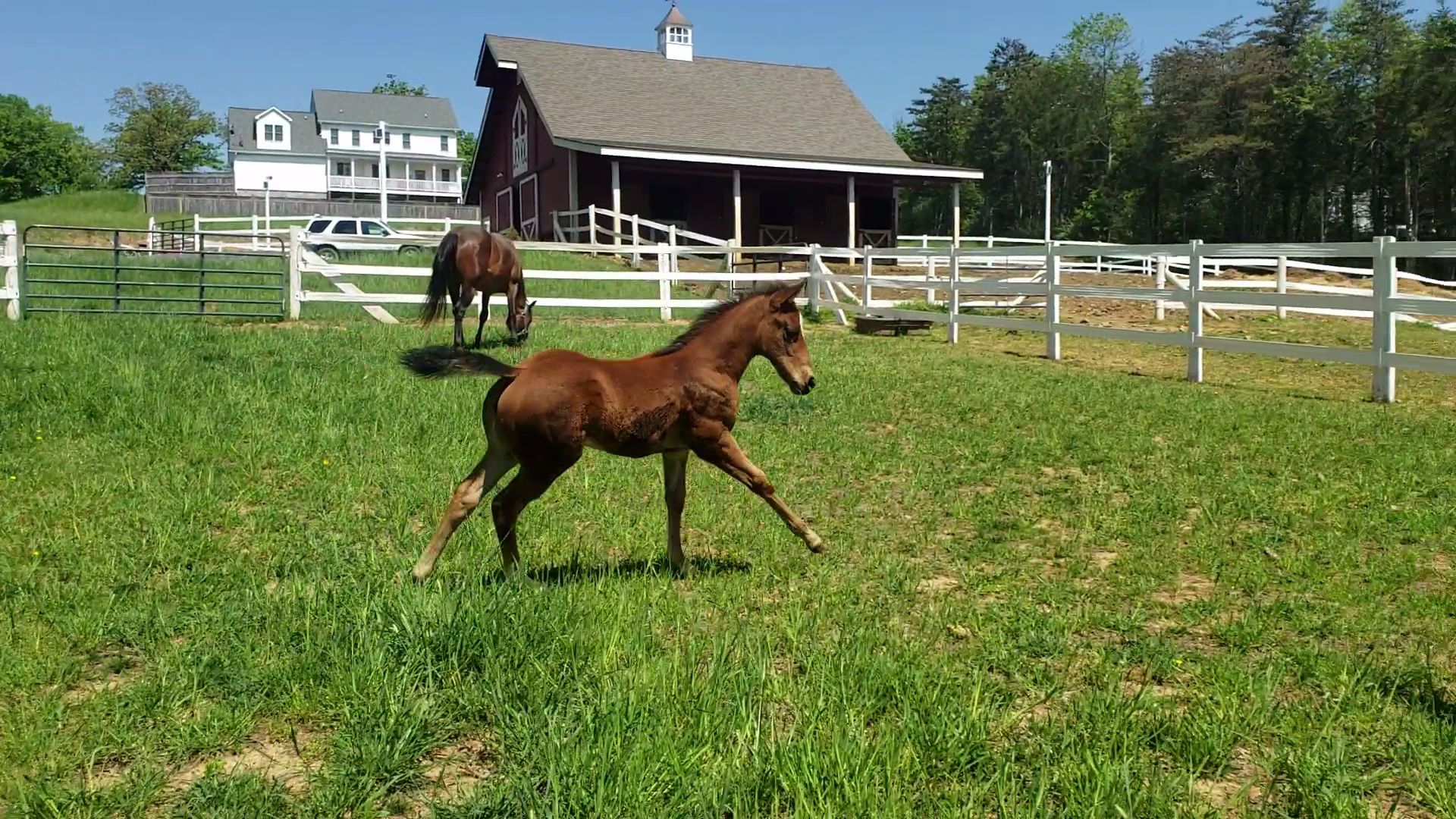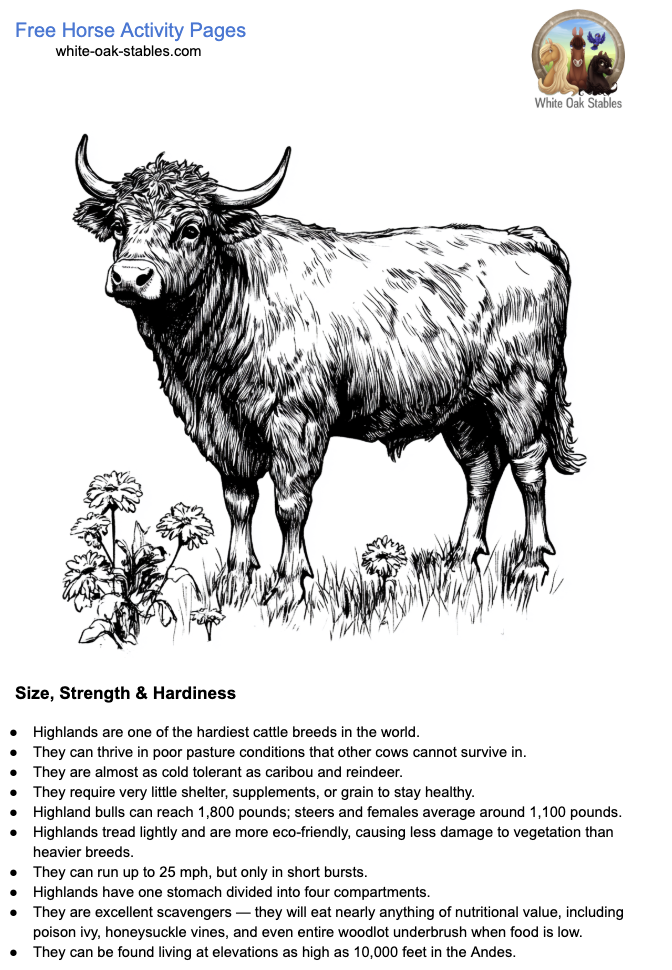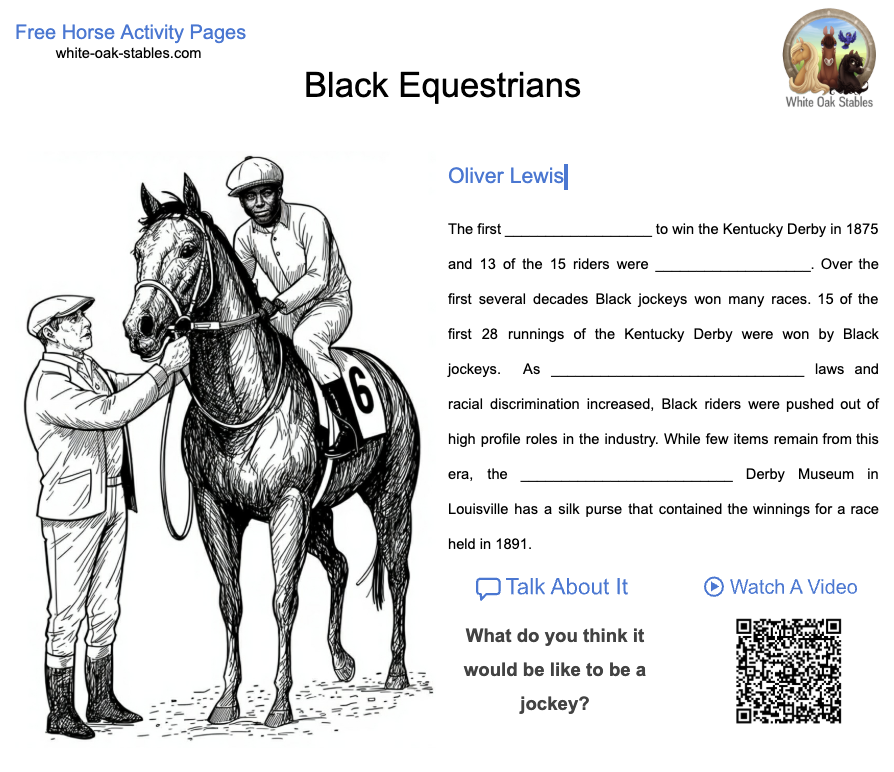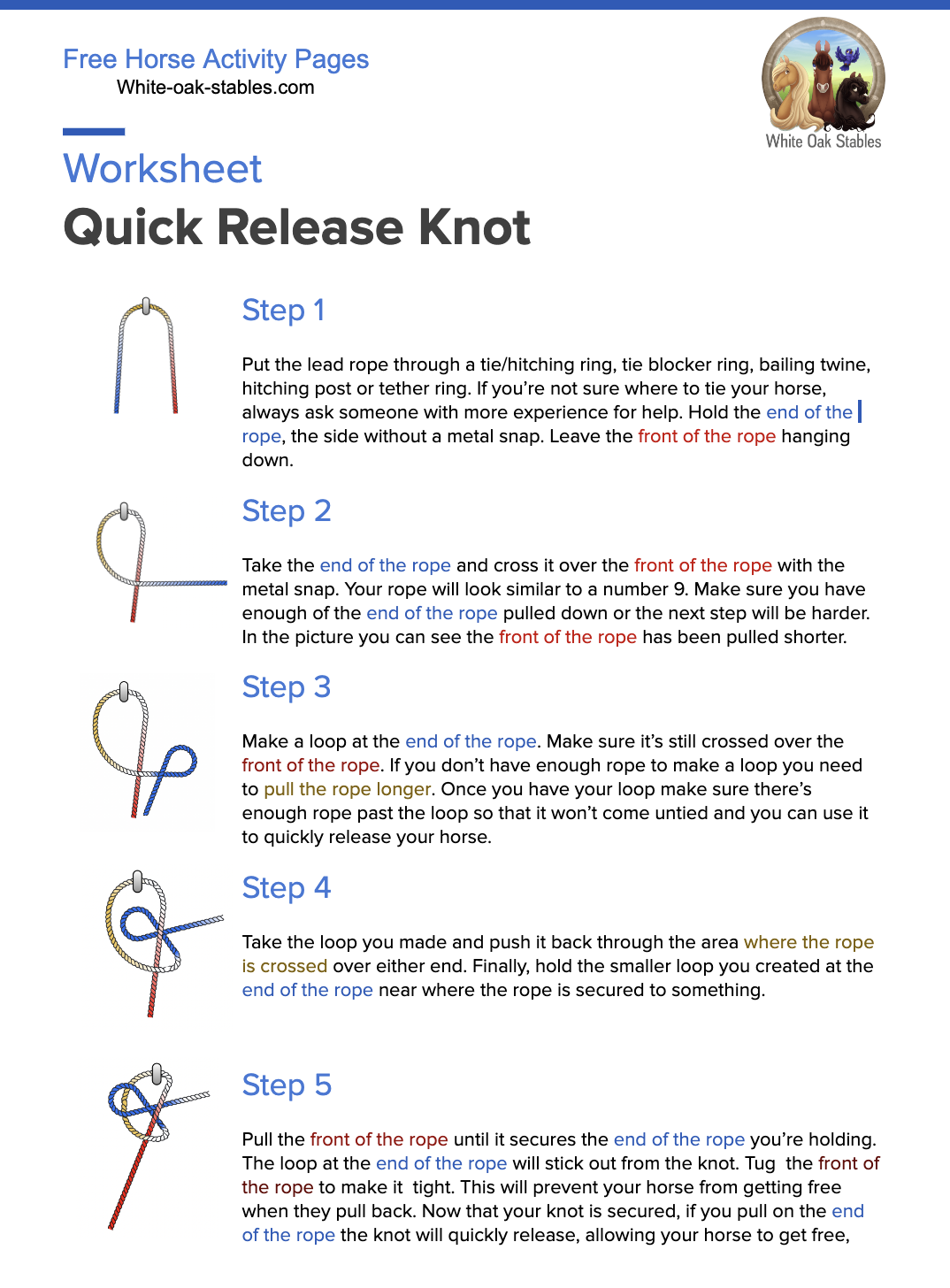
Having trouble with your horse racing around the arena? Does your horse seem to ignore you or panic and take off? Here are 26 different exercises you can try to get your horse to slow down, pay attention and listen.
On The Ground
1. Follow the Leader – sometimes your horse doesn’t listen because they don’t respect you as their leader. Bring your horse out to the round pen or arena with just a halter and a long lead rope (or a dressage whip). Ask your horse to go forward by spinning the end of your rope (or tapping with the whip) on their haunches. If your horse doesn’t go forward, ask them again and keep asking them until they step forward. Once they’re listening to your go-forward signal, try asking them to go the other direction. Once they’ll go both directions, turn and walk away, your horse should immediately follow you. If they get to the end of your lead rope and haven’t followed, make them go forward again in both directions. Repeat until they follow you. If your horse follows you immediately but walks too close to you spin your lead rope (or wave your whip back and forth) in your space so that it will hit them if they walk too close but won’t touch them if they walk a respectable distance from you. Repeat this exercise until your horse is walking beside you willingly, without asking, and without crowding your space.
2. Learning Whoa – Put your horse on a lunge line and then ask them to go forward with a lunge whip or by spinning the end of your lunge rope. Watch carefully for your horse to slow down and immediately say “whoa” as they slow down. If they break to a slower gait, use your lunge whip or rope to ask them to increase their pace again. When they slow down immediately say “whoa” again. Repeat this exercise several times. Then try saying “whoa” when they’re not slowing down and see if they slow down on their own. If not, go back to repeating “whoa” when they slow down on their own. This teaches your horse to associate the word “whoa” with decreasing their speed.
3. Joining Up – Put your horse in the round pen or an empty arena if you don’t have a round pen. Using a lunge whip to free lunge your horse around the enclosure at a trot (faster is okay). Keep your horse trotting in one direction until they stretch their head down towards the ground (don’t let them stop and eat). Once they put their head down, reverse direction and make them go the other way until they again stretch their head down towards the ground. This is a sign of your horse recognizes you as a leader. Now turn your back to your horse so they can’t see your face and stand still. Your horse should walk right up to you and stop close to you or even touch you with their nose. If they do, you’ve successfully joined up with your horse. If your horse ignores you go back to free lunging them until they drop their head in both directions and then try turning your back to them again. Repeat until they walk up close to you with your back turned.
On The Flat
4. Bending – Walk your horse in the arena. If your horse goes too fast, ask your horse to turn its nose towards the inside of the arena while keeping its haunches and butt on straight. This is a shoulder-fore. You should just be able to see the edge of your horse’s eye as it bends at the poll. Keep your horse in a shoulder-fore until it slows down, then let it walk straight again. When your horse goes too fast again, bend its nose towards the fence while keeping its haunch and butt straight. This is a shoulder-in. Continue to alternate between using a shoulder-fore and a shoulder-in when your horse is going too fast. Only let your horse walk straight when it has slowed down.
5. Speed Transitions – Walk your horse until you have an average speed. Now ask your horse to slow down its walk as slow as you can without halting. Now ask your horse to return to an average speed. Next try asking your horse to walk faster without breaking into a trot, then return to a normal walk. This is beginning to teaching your horse to collect (take smaller steps) and extend (take larger steps) within the same gait and will increase its understanding of your whoa and go aids.
6. Gait Transitions – Halt your horse. Ask it to walk and as soon as it walks too fast ask it to halt again. You can also try using your “whoa” voice command instead of pulling your reins to a halt. The idea here is to improve your horse’s understanding of your aids when you want to change your speed. When your horse can maintain the speed you’ve set it to, try doing walk-trot transitions and then trot-canter transitions. If you’re looking for a challenge, try putting several steps in your transitions. For instance, 4 walk steps then 4 trot steps then 4 walk steps again.
7. Circles – If your horse is a big runner will suddenly take off for no reason, circles are your early best friend. When your horse is going too fast, making a circle is one of the easiest ways to slow your horse down. You can use a pulley rein to help you if they won’t stop. Plant one hand down on your horse’s neck, and with the other hand, shorten your rein and pull hard towards your hip to turn your horse into a small circle. When the horse is turning in a small circle, it cannot continue to run.
8. Figure Eights – This is an updated version of the earlier circle exercise. Rather than just making a circle, use your pulley rein with alternate hands to make a compact figure eight. In this exercise, you will give your horse the opportunity to go too fast across the straight diagonals of the figure eight, then use the circular ends of the 8 to control and reel in their excessive speed.
9. Serpentines – Similarly to the circle and figure-eight exercise, this gives your horse several long straight stretches and opportunities to go too fast then uses the curved ends of the shape to help reduce your horse’s speed before going into the next straight stretch.
10. Spirals – I like this exercise for horses that lean on your hands and go too fast. Start by making a large circle and when your horse gets too fast spiral your circle inwards, making it smaller and smaller until your horse slows down. When your horse has returned to normal speed, make your circle bigger and bigger until you are back to your original large circle. If your horse gets too fast again, then spiral your circles in smaller again. Repeat this exercise until your horse can keep its speed steady at the large circle you set it at to start.
11. Irregular Gridwork – Set out a series of ground poles and cavaletti at irregular distances and angles (ie some walking distance, some trotting distance, some canter distances) and then have your horse work through them. The idea here is to get your horse thinking about where it needs to place its feet without stepping on a pole. Try it first at slower speeds until your horse is consistently paying attention to where it is placing its feet before you try faster gaits.
12. Half-halt – This is an advanced exercise. Squeeze both of your legs and ask your horse to walk, then keep squeezing your legs to send your horse forwards. Hold your outside rein with contact. There should be no slack and an ounce of pressure in your hand on the rein. With your inside rein squeeze and release your fingers like you’re squeezing a stress ball to keep your horse from turning its head towards the fence, it needs to stay straight. For this to work, you have to squeeze your legs the whole time to drive your horse up into its bridle. Always give the aids in this order: squeeze both legs, hold the outside rein, then squeeze and release the inside rein as necessary to keep your horse’s head on straight. If you don’t put your leg aids on first you will encourage your horse to go into a false frame and potentially cause rolkur. Your driving aids must always come from your legs first as we ride our horses from back to front rather than front to back.
13. Don’t Stop Trotting – This exercise is for experienced riders only. Please use caution with this exercise, the intent is not to run your horse to the ground or to cause it to overheat or become injured. This exercise is exactly what you think it is. Don’t stop means you encourage your horse to go at a speed it wants until it slows down on its own. However, the training kicks in when your horse gets tired. Rather than letting the horse slow down like it wants to, you will encourage it to keep going forwards at the same speed it was before (ie don’t stop). This helps the horse understand your “go forward” aids and makes them more intentional. When your horse is listening and maintaining its speed when you ask it to not stop, then you will reward it by giving your whoa aids and letting it rest. The big reward becomes listening and being alert to your whoa aid.
Over Fences
14. Bending – Rather than jumping a fence on a straight line, introduce your horse to a bending line. The idea is your horse needs to turn its head and neck to approach the jump rather than just riding a straight line over the center of the jump. You can try a single fence or do this as a bending line.
15. Add Strides Before or Between – Start counting how many strides it takes you to jump a single jump. Now add one stride, two strides, or even more before the jump each time you approach it again. You can also try adding the strides between a line of jumps.
16. Downwards Transitions – Jump and transition to a downwards gait. You can also try jumping and moving to a slower gait between a line of jumps for more of a challenge.
17. Circles or Spirals – Place your jumps on a circle and then jump them in a circle. For a greater challenge, try your jumps on a spiral!
18. Serpentines – Place a jump in the straight lines of your serpentine. This makes your horse jump and turn in quick succession.
19. Grid Work – Place canter or trot distance ground poles in between your jumps. Place poles before or after a single jump. The idea is to get your horse thinking about how it needs to place its feet after it jumps rather than racing through.
20. Half-halt – Practice doing a half-halt before and after a jump. For more of a challenge, add half-halts between jumps in a line.
21. Which Way – Place your jumps in a Y pattern, with one jump on the straight line and then two jumps on a bending line. Jump the first jump on the straight line and then randomly pick to jump the second jump on either the right or the left. This forces your horse to listen to your guidance for which jump they should take next rather than just rushing to the next jump right in front of him. For a real challenge, add another jump on the straight line between the right and left jumps so you have three jumps to pick from after jumping the first one.
22. Circling Out – I do not recommend this for green horses or horses that have a habit of refusing jumps. With this exercise, anytime your horse races at the jump you will circle out rather than jumping the jump. This forces your horse to wait and listen for your permission to take the fence.
23. Jump, Halt, Backup, Jump– This exercise is fairly self-explanatory. Set up a single jump. Jump over it and if your horse races make it halt, back up three steps, then turn around and jump the jump again, going the opposite direction. Repeat until your horse isn’t racing the jump.
24. Jump, Circle, Jump – This is great for a horse that only rushes the second fence in a line of jumps. Have your horse jump the first jump, then circle in between the two jumps, then jump the second jump. This forces your horse to slow down in the circle before it jumps again. If you need to circle a few times or even spiral, feel free!
25. Jump, Halt, Jump – Jump the first jump in a line. Halt your horse in between the two jumps. I usually make it stand quietly for a few seconds. Then ask your horse to jump the second jump in the line.
26. Halt, Jump, Halt – Only use low jumps for this exercise. Trot your horse up to a single jump and halt. Then ask your horse to jump the jump at a slow speed. Then halt your horse again.
Bonus! Combination Exercises
Need more ways to slow your horse down? Take any of these exercises and try combining them! How about a circle with bending, or a serpentine with speed changes, or gait changes in a spiral? Mix and match until you find the perfect combination of these exercises to help your horse slow down, better understand your aids and pay attention.




